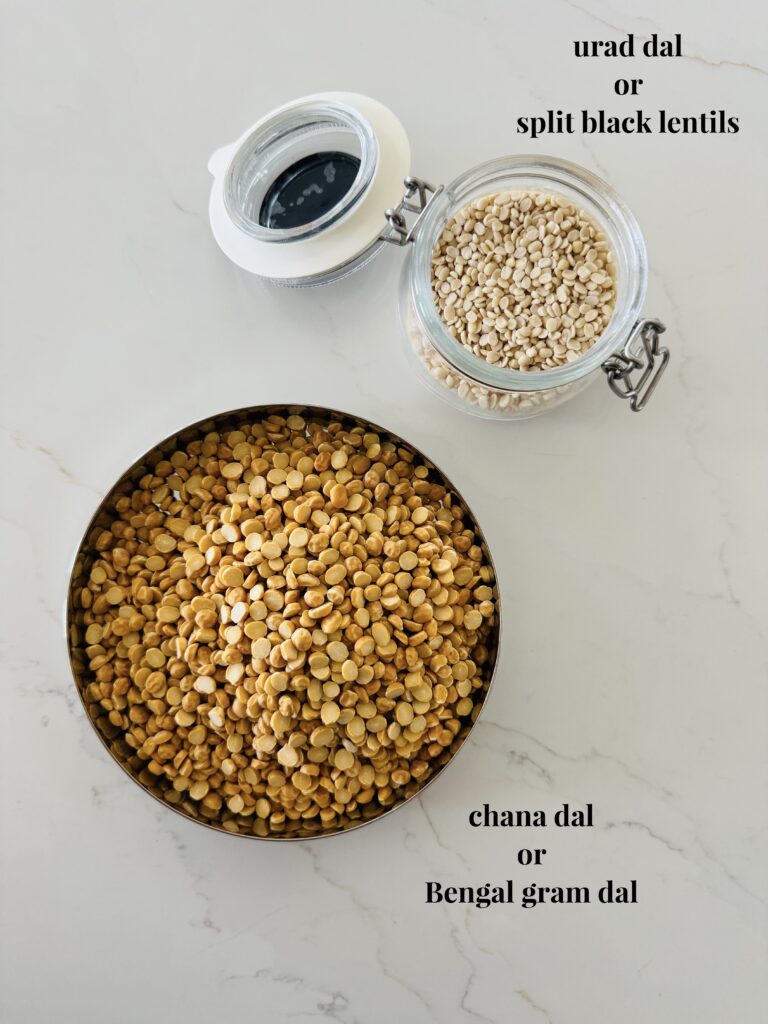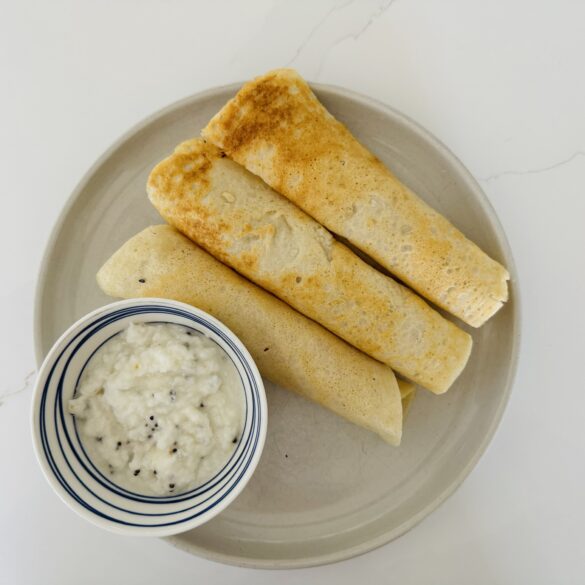Dosa is a breakfast staple in South India. Made of fermented rice and lentils, it packs probiotic nutrients. Cooked like a crepe, you can eat dosa with a lentil soup called sambar, or different types of sauces, such as coconut, tomato, or garlic chutney. If you’ve been to a South Indian restaurant, you can’t miss it when it comes out of the kitchen. Some dosa variety, such as the paper dosa, are long—the longest I’ve seen at about two feet! In parts of India, I’ve heard, that there are restaurants that serve dosas up to four feet long. Don’t worry. The size we’re making today is about the size of a tortilla, around 5-6 inches in diameter.
What Makes This a Simple Dosa Recipe?
In this recipe, I wanted to create a simplified dosa batter. The typical recipe calls for three different types of rice, parboiled rice, flattened rice, and regular rice. Having to purchase atypical ingredients (atypical for a non-Indian kitchen), can be a barrier to trying new recipes, so I wanted a recipe that maintains the texture and taste of dosa, while keeping a minimalist ingredient list.
I hope you try this at home. Kept in an airtight container, you can make an keep the batter for up to 5 days in the fridge. This batter and dosas in general are not hard to make, but it takes preparation and planning, since you have to ferment the rice. So you give yourself at least 24 hours for this recipe.
Serving Tips
In this video, I made the dosa with coconut chutney, which is my favorite way to eat a dosa. You can also eat with dosa chutney powder, which you can purchase on Amazon. I like to add a little toasted sesame oil to the dosa chutney powder and spread a thin layer on the dosa.
If you don’t have the traditional chutneys, dosa can be eaten as a crepe. I sometimes have it with Tofu scramble.
Fermenting and Cooking Tips
The fermentation process depends on where you life. I live in California and 24 hours is enough even in the winter, If you live in a cold place, it might take longer. In hot places, 8 hours might be enough. If you have an Instant Pot, you can use the yogurt setting to ferment and should be ready.
Batter consistency is like pancakes. Not runny, but not too think either. It has to be spreadable.
Dosas are best when eaten hot. I recommend cooking only the dosas you want to eat and save the batter for later. You can wrap them in foil after cooking and they’re good for about 2 hours after. They will lose their crispiness if you wait longer.
The thinner the spread, the crispier the dosa. It’s nice to have parts of dosa that are crispy, but don’t feel pressured to spread very thin throughout.
If you refrigerated your batter, mix the batter again and leave it out for about 5 minutes so it’s not too cold.
Cast iron should be hot.
Fermented foods have been an important component of the human diet from the time immemorial. It contains a high amount of probiotics that have been associated to a wide range of health benefits, including improved digestion and immunity.
Benefits of Fermented Foods from Frontiers in Microbiology


